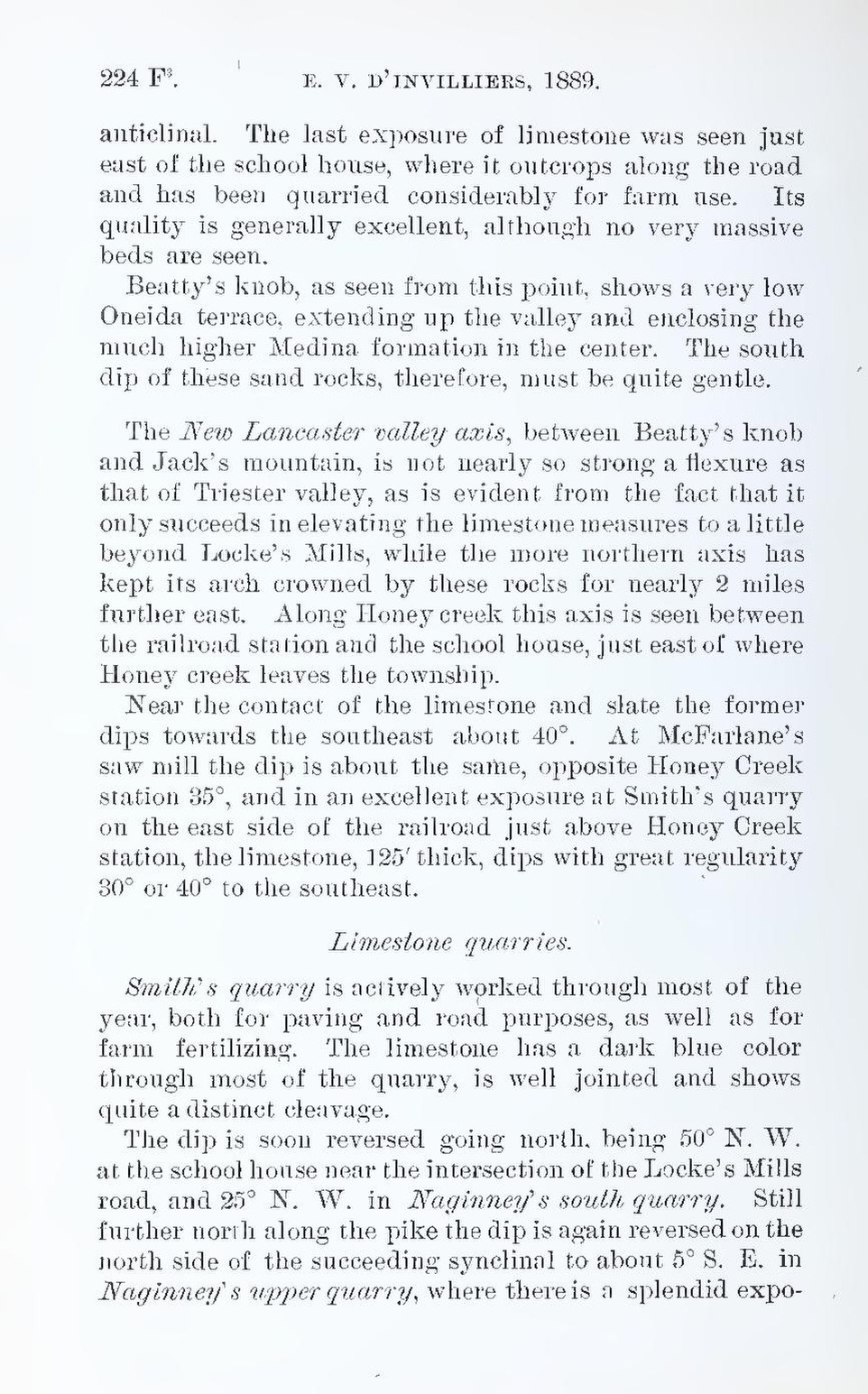anticlinal. The last exposure of limestone was seen just east of the school house, where it outcrops along the road and has been quarried considerably for farm use. Its quality is generally excellent, although no very massive beds are seen.
Beatty’s knob, as seen from this point, shows a very low Oneida terrace, extending up the valley and enclosing the much higher Medina formation in the center. The south dip of these sand rocks, therefore, must be quite gentle.
The New Lancaster valley axis, between Beatty’s knob and Jack’s mountain, is not nearly so strong a flexure as that of Triester valley, as is evident from the fact that it only succeeds in elevating the limestone measures to a little beyond Locke’s Mills, while the more northern axis has kept its arch crowned by these rocks for nearly 2 miles further east. Along Honey creek this axis is seen between the railroad station and the school house, just east of where Honey creek leaves the township.
Near the contact of the limestone and slate the former dips towards the southeast about 40°, At McFarlane’s saw mill the dip is about the same, opposite Honey Creek station 35°, and in an excellent exposure at Smith’s quarry on the east side of the railroad just above Honey Creek station, the limestone, 125′ thick, dips with great regularity 30° or 40° to the southeast.
Limestone quarries.
Smith’s quarry is actively worked through most of the year, both for paving and road purposes, as well as for farm fertilizing. The limestone has a dark blue color through most of the quarry, is well jointed and shows quite a distinct cleavage.
The dip is soon reversed going north, being 50° N. W. at the school house near the intersection of the Locke’s Mills road, and 25° N. W. in Naginney’s south quarry. Still further north along the pike the dip is again reversed on the north side of the succeeding synclinal to about 5° s. E. in Naginney’s upper quarry, where there is a splendid expo-
